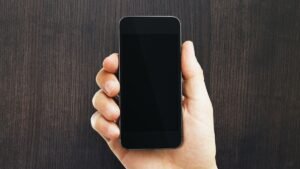Is your device refusing to charge, leaving you frustrated and desperately searching for a solution? You’re not alone. Many tech users grapple with the dreaded “not iPad charging” conundrum. But fear not, this troubleshooting guide is here to help you get to the bottom of your charging woes.
Common Causes of an iPad Not Charging
Several factors can prevent your iPad from charging properly. Let’s explore the most common ones:
1. Faulty Cable
Cables are prone to wear and tear, especially if they’re bent or twisted frequently. A frayed or damaged cable might not make a good connection, hindering the charging process. Think about how often you coil your cable tightly or shove it into a bag – these habits can lead to tiny fractures in the cable’s internal wiring, eventually rendering it useless. Luckily, cables are relatively inexpensive and readily available.
2. Faulty Power Adapter
The power adapter is the component that converts wall outlet electricity into a format your iPad can use. A malfunctioning adapter could deliver insufficient power or no power at all. If you have another Apple device that uses a similar adapter, try swapping them to see if the iPad charges with a different adapter. This can help you isolate whether the issue lies with the cable or the adapter itself.
3. Dirty or Damaged Charging Port
Over time, dust, lint, or debris can accumulate in the charging port, preventing a secure connection with the cable. In rare cases, the port itself might be physically damaged, making charging impossible. Imagine tiny pockets of dust or fluff acting like little roadblocks, preventing the charging current from flowing freely between the cable and your iPad.
4. Extreme Temperatures
Just like any electronic device, iPads can be sensitive to extreme temperatures. If your iPad has been left baking in a hot car on a summer day or exposed to cold temperatures, it might not charge properly as a safety precaution. The iPad’s internal components are designed to operate within a specific temperature range. Excessively high or low temperatures can trigger safety mechanisms to prevent overheating or damage to delicate circuitry.
5. Software Issues
Occasionally, software glitches or outdated software can interfere with the charging process. Imagine the software as the invisible conductor of the charging orchestra. If there’s a bug in the code, it could disrupt the communication between the iPad and the charger, leading to charging inconsistencies.
How to Troubleshoot Not Charging iPad
Now that you know the potential culprits, let’s get down to troubleshooting! Here’s a step-by-step approach to diagnose and fix the issue:
1. Verify You’re Using the Right Cable and Adapter
This might seem obvious but double-check that you’re using the cable and adapter that came with your iPad or another Apple-certified charger. Different iPad models might require specific wattage adapters to function correctly. Not all charging cables are created equal! Some cables are designed only for syncing data and won’t provide enough power to charge your iPad.
2. Ensure the Power Outlet is Functional
Try plugging your iPad and charger into a different outlet. This helps rule out a faulty wall socket as the culprit. A simple yet effective step – sometimes the issue lies not with the iPad or charger itself, but with the power source feeding them.
3. Look for Damage to the Cable or Adapter
Examine your cable for any visible signs of damage, such as fraying, splits, or loose connections at the ends. Inspect the power adapter for any cracks or dents. Pay close attention to the stress points on the cable, where it connects to the plug and the iPad itself. These are common areas where wear and tear can occur.
4. Gently Clean the Charging Port
If you suspect dust or debris might be causing the issue, use a soft-bristled brush (like a toothbrush) to carefully clean the charging port. Do not use any sharp objects or compressed air, as these could damage the delicate pins inside the port. Think of the charging port as a small doorway – a light dusting might be all it takes to get the current flowing smoothly again.
5. Restart Your iPad
For iPads with a Home Button: Hold both buttons for at least 10 seconds, until you see the Apple logo appear.
For iPads without a Home Button: Quickly press and release the Volume Up button, then quickly press and release the Volume Down button. Finally, press and hold the top button until the Apple logo appears.
6. Update iPad to the Latest Software
Outdated software can sometimes cause charging issues. Keeping your iPad updated with the latest software ensures it has the most recent bug fixes and performance improvements. Here’s how to update your iPad:
- Connect your iPad to a Wi-Fi network.
- Back up your iPad (optional but recommended).
- Go to Settings > General > Software Update.
- If an update is available, tap Download and Install.
7. Seek Professional Help
If you’ve tried all the troubleshooting steps above and your iPad is still not charging, it might be time to seek professional help. Here are some signs that indicate your iPad might require service from a qualified technician:
- Visible damage to the charging port: If the charging port looks bent, broken, or has any corrosion, attempting a DIY fix could cause further damage.
- Liquid damage: If your iPad has been exposed to liquid, it’s crucial to seek professional help immediately. Even a small amount of liquid can damage internal components and lead to charging problems (or worse).
- Persistent charging issues: If none of the troubleshooting steps resolve the issue, there might be a more complex hardware problem at play.
Conclusion
A non-charging iPad can be a major inconvenience, but hopefully, this guide has equipped you with the knowledge and steps to diagnose and fix the problem yourself. By following these troubleshooting tips, you can get your iPad back up and running in no time. Remember, if the issue seems beyond your comfort zone or involves potential hardware damage, don’t hesitate to seek professional help from Apple or an authorized service provider.




